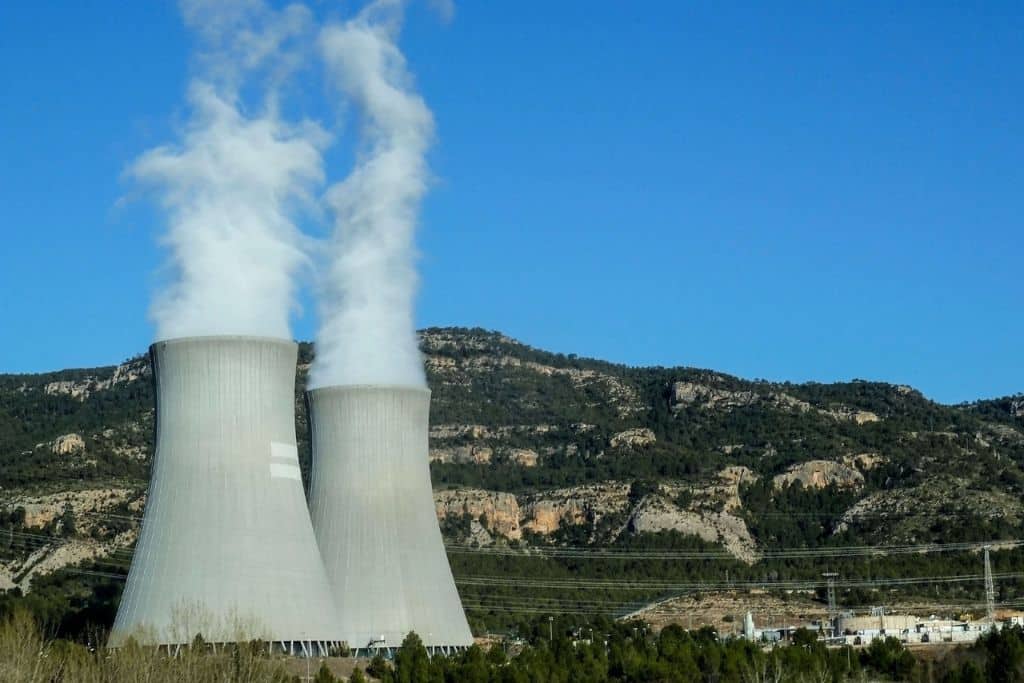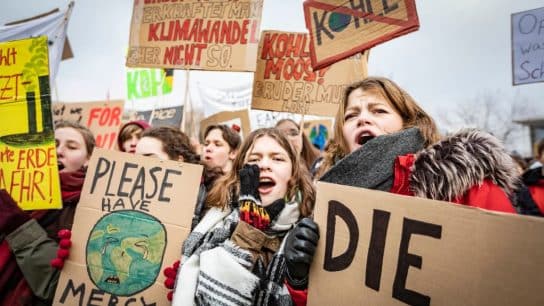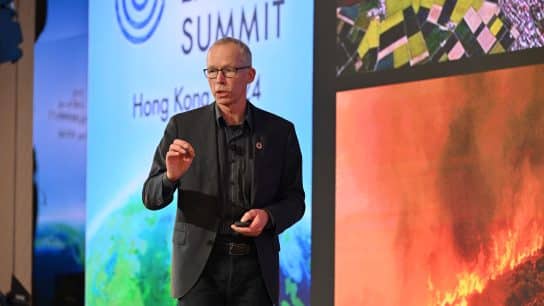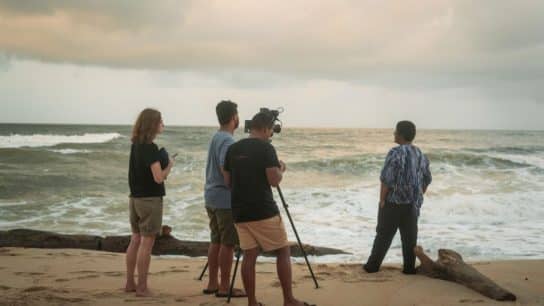In an exclusive interview with Earth.Org, Dr Victor Nian, co-founder and CEO of the Centre for Strategic Energy and Resources (CSER), an independent Singapore-based think tank and founding member, elected council member and Honourary General Secretary of the International Society for Energy Transition Studies, an Australia-based global non-profit professional society, shared his take on the recent nuclear fusion breakthrough in the United States, and the outlook of nuclear energy in the ASEAN landscape.
—
Nuclear Fusion Breakthrough
In December 2022, the United States Lawrence Livermore National Laboratory (LLNL) announced a momentous breakthrough in harnessing controlled nuclear fusion. The LLNL’s National Ignition Facility (NIF) achieved “ignition” – a fusion experiment that generated 50% more energy than consumed by the lasers powering it. This piece of scientific news garnered significant publicity and invoked many questions about what is next in the progress.
To unpack the nuclear fusion breakthrough, the role of nuclear power in our future energy supply, and the outlook of nuclear energy in the ASEAN region, we have turned to Dr Victor Nian of CSER, one of the most renowned experts in Energy advisory, with his research interest and expertise in the areas of atomic energy and energy systems modelling. Dr Nian’s thought leadership on nuclear energy brings us all the way back to 2012, where he discussed the state of nuclear power two years after Fukushima from the ASEAN perspective.
You might also like: What is Nuclear Fusion?
EO: Dr. Nian, could you share with us your views on the recent fusion breakthrough in the United States and more importantly, what is next in regards to the commercial viability, scalability and progress?
Dr. Nian: It is encouraging to see that the scientific community is making progress in nuclear fusion development. However, the numbers behind the significant net-positive energy gain as what the mass media popularised did not really account for the total energy used by the entire device to produce the measured energy output. When all energy inputs are considered, particularly the energy that is used to produce the high power laser, the net-positive energy gain remains insignificant and somewhat within expectation. It would still be decades away before a promising commercial prototype can be developed and demonstrated.
There is still the need to build a scalable industrial supply chain to support commercial deployment of nuclear fusion power plant. Based on the estimates of the most notable international effort, dubbed ITER, the cost of nuclear fusion based on the most recognised magnetic confinement technique is unable to make a business case for commercial deployment.
EO: Fusion is still at an early stage, not yet ready for commercial electricity generation. What does this mean for the role of fusion in our future energy supply?
Dr. Nian: Most of us today still believe that fusion is still 30 years away, and it would probably always be, but the scientific community is working very hard to bring it to reality. Besides demonstrating fusion technology, there is also a need to build a commercially viable supply chain to support future nuclear fusion power plants. For reference, the nuclear fission industry took several decades to build a viable supply chain. In addition, we have barely heard any notable development in tritium (fuel for nuclear fusion) supply that can potentially be industrialised to support a nuclear fusion fuel cycle if there is one. In the next couple of decades, nuclear fusion will likely remain in research and development stage, possibly with more good news about breakthroughs along the way.
From a national strategic point of view, fusion might be considered a long-term option as it entails benefits far beyond being an energy source. However, we must also recognise the critical importance of addressing near or immediate term energy and climate related issues with commercially viable and nationally appropriate options. It is still uncertain where fusion could and should stand in the national strategic planning roadmaps.
EO: Taking a step back to put things into context, could you bring us through the energy security aspect of nuclear energy? Nuclear power plants have been given a bad reputation by the Chernobyl, Fukushima, and Three-Mile-Island and these events still resonate strongly in the public consciousness. Is there any trade-off on security and safety in the developments?
Dr. Nian: Nuclear energy, despite all controversies, is a reliable, clean and affordable source of energy. It doesn’t have the same intermittency issue and hence grid integration challenges as faced by most renewable energy options. Back in the 1970s, the interest in nuclear energy was driven by the need to address the impacts of “peak oil” on national energy security. We are seeing a “return” of nuclear energy as the Ukraine War brought fossil fuel prices to record high. What’s still slowing down the development in nuclear energy is the general fear about severe nuclear accidents, such as those seen in Chernobyl and Fukushima, although nuclear technology has already become so much safer making those accidents literally irrelevant – “Fukushima-proof”. However, radiation, a byproduct of nuclear energy, remains a source of fear among the general public due to the general lack of scientific and factual information available in the mass media space.
EO: What is your outlook on nuclear energy in the ASEAN energy mix?
Dr. Nian: As of now, there is no operating nuclear power plant in ASEAN. The only nuclear power plant that was built in the region was the Bataan nuclear power plant in the Philippines constructed in the 1980s, butt the plant was never operated. A decade after Fukushima, we are seeing a return of nuclear energy to the national energy debate in the region. Several countries, such as Indonesia, Philippines and Vietnam have announced plans and/or national positions on adopting nuclear energy in the long term. Despite the effort in developing renewable energy, a net-zero ASEAN will need nuclear energy as a carbon-free baseload power generation technology to support continued industrialisation, urbanisation and population growth, especially when considered from energy security, resilience and independence perspectives.
The emergence of advanced small modular reactors, with their compact size, small footprint, and significantly enhanced safety, could potentially accelerate ASEAN’s nuclear movement. In addition, the upcoming floating nuclear power plant, essentially moving nuclear power plants away from land to the sea, means further opportunity and avenues for nuclear power plant deployment in the region. Nuclear energy has been included in the EU taxonomy and ASEAN is working on the same. With potential inclusion of nuclear energy in the sustainable financing scheme, ASEAN could look forward to having nuclear energy as another pillar to support its energy and climate agenda well before the 2050 timeline.
Final Thoughts
Most people would regard nuclear energy as a power source which is what currently operating commercial nuclear power plants are designed for. But advanced nuclear power technology currently under development can enable a much broader range of applications than simply producing electricity. Some of the more advanced nuclear technologies can be designed to produce high temperature heat that could be used in industrial processes, such as hydrogen and ammonia production, water desalination, and other heating applications.
With floating nuclear power plants, one could even imagine future hydrogen or ammonia production as well as power generation could be all relocated to offshore floating facilities, creating a floating industrial park which can free up precious land space for high value-add property development in land-constrained ASEAN context. The Centre for Strategic Energy and Resources is developing a concept on an offshore floating multi-utility complex which could produce multiple energy related products, such as hydrogen, methanol, fresh water, power, heating and cooling from the same floating nuclear energy sources to support multiple downstream use cases potentially supported by innovative financing models.
In this interview, Dr Nian provided us with a balanced view of nuclear’s role in energy landscape cutting through the noise of mainstream media portrayal, and shed some light around the wider applications beyond energy of advanced nuclear power technology. He also introduced us to the concept of floating nuclear power plant – something you can expect from Dr. Nian, who is known for his foresight in the energy industry, and very reminiscent of his founding spirit of CSER: “Knowledge and innovation without borders.”
You might also like: The Advantages and Disadvantages of Nuclear Energy

















